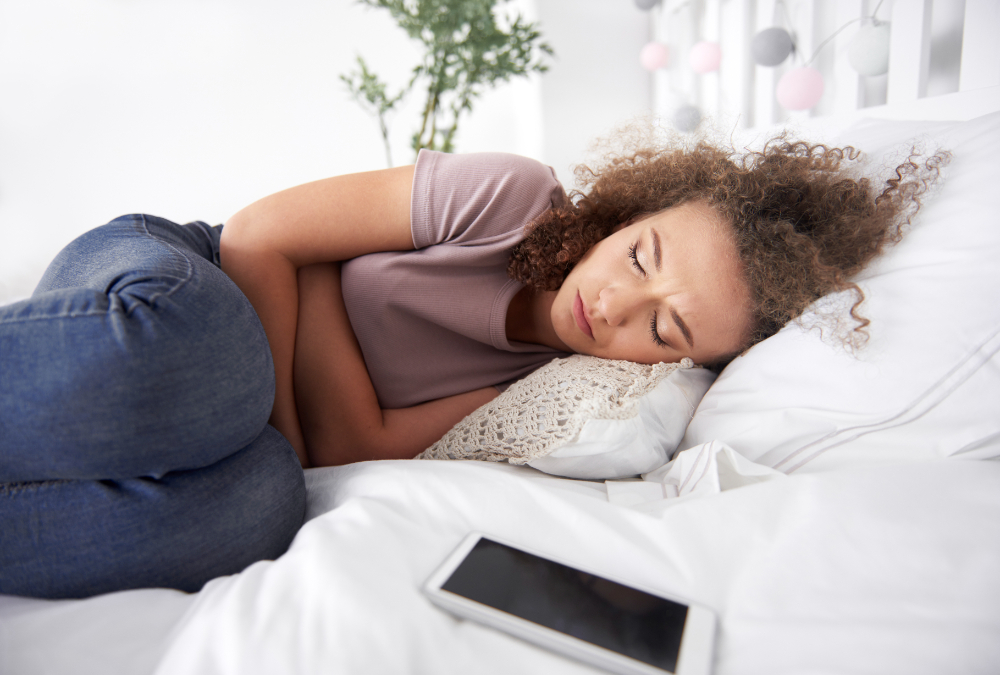What Your Lower Back Pain Is Trying to Tell You
Back pain particularly in the lower part is a common issue at any age. The sensation might range from a dull ache to stabbing or shooting pain. Sometimes it can improve within a few days or weeks, but it might become a bigger problem if the pain lasts longer or keeps coming back. Understanding the underlying causes is essential for effective treatment and prevention.
Lower back pain can impact nearly every aspect of a person's life, from work productivity to physical activity and mental well-being. Whether caused by injury, poor posture, or underlying health conditions, it disrupts normal routines and can lead to long-term complications if left untreated.
10 Causes of Lower Back Pain
Muscle Strain
A series of muscles and ligaments in your back support the bones of your spinal column. Excess stretching can strain and weaken these muscles, making the spine less stable and leading to lower back pain. A common trigger can be intense physical activity, falling, or lifting heavy objects.
Herniated discs
The discs act like cushions between your vertebrae bones, allowing you to move and bend. Due to their soft, gel-like centers and a firmer outer layer, the disc can weaken and crack with time, causing it to be herniated. Aging, excessive weight, sudden strain, and repetitive motions can cause disk rapture (1).
Sedentary behavior
Sedentary behavior Is a lifestyle with a lot of sitting and lying down, with very little to no exercise, which can be detrimental to one’s health. Sitting for prolonged periods increases stiffness and decreases flexibility, which leads to weakened muscles that support the spine causing back pain.
Poor posture
Posture is how you hold your body while standing, sitting, or performing tasks. If it's good the bones of the spine — the vertebrae — are correctly aligned (2). Poor posture can compress the nerves and blood vessels in the back, leading to pain and issues affecting the joints, muscles, and discs.
Arthritis
A disease that causes swelling and tenderness in your joints. Some wear down naturally as you age, but some can happen after an injury. Osteoarthritis is the most common type of arthritis. It happens when the cartilage that lines your joints is worn down or damaged and your bones rub together when you use that joint causing discomfort and pain in the back (3).
Sciatica
Sciatica is a pain that goes along the path of the sciatic nerve which is the longest and thickest in your body. Sciatica happens when irritation, inflammation, pinching, or compression affects one or more nerves that run down your lower back and into your legs (4). The pain can appear anywhere from your lower back to your hips and legs.
Kidney Stones or Infection
Severe back pain, blood in the urine, nausea, and fever can indicate kidney stones or infection. Kidney stones are hard deposits of minerals and salts that form inside due to an imbalance in urine composition. Infection is caused by bacteria that travel from the bladder to both kidneys.
Endometriosis
Endometriosis causes tissue similar to the lining of the uterus to grow in other places it doesn’t belong (5). It causes painful symptoms that can impact not only the menstrual cycle but also the daily life of the women. If the tissues grow in or near the back it can result in chronic back pain.
Pelvic Inflammatory Disease
Infections, including sexually transmitted infections occur in the female reproductive organs. PID occurs when bacteria move from your vagina, through your cervix, and up into your uterus, fallopian tubes, and ovaries. Symptoms usually include pain in the lower abdomen, pelvis, and lower back, abnormal vaginal discharge, unusual smell, burning sensation while urinating, and irregular periods (6).
Osteoporosis
As you age, your bones naturally lose some of their density and ability to regrow, making them much more fragile and more likely to experience a bone fracture. Usually, people are not aware that they have osteoporosis; however, mild symptoms can occur, such as loss of height, lower back pain, and change of posture (7).
How to Get Relief from Back Pain
Cold compress
Simple home remedies and lifestyle modifications can greatly help relieve back pain. A cold compress can numb an area and reduce swelling in an injury.
Heating pad
After using a cold compress, you can use a heating pad to soothe and relax aching muscles.
Yoga
If the pain is caused by being in the same position for too long, stretching exercises like yoga can provide relief. Gentle exercise strengthens muscles and helps prevent unexpected injuries and future pain.
Ergonomics
Ergonomics is another way to avoid back pain problems at the workplace. Adjust the chair to keep your thighs parallel to the floor with your feet standing on it. The elbows should be placed close to the body with your shoulders relaxed. Make enough room for your legs and feet and use a footrest if needed.
Physical activity
The most effective way to avoid problems with back pain is to incorporate physical activity into your daily routine. Try to do some workouts, take the stairs and walk wherever you can, set reminders to have breaks, and combine physical activity with something you already do, like walking a dog and jogging. Such small changes can greatly improve your well-being and prevent back pain.
Treatment Options for Back Pain
If back pain becomes a constant issue, you might need a professional intervention. Here are some treatment options for back pain.
Physical Therapy
Physical therapy (physiotherapy) helps injured people improve their movements and manage pain. It includes exercise and stretches to increase strength, flexibility, and mobility. Physiotherapy for low back pain is usually a guided therapeutic exercise that helps to decrease painful symptoms and improve flexibility and function of the spine.
Osteopathy
Osteopathy is a method of alternative medicine that emphasizes the physical manipulation of the body's musculoskeletal system to treat a variety of conditions. Doctors use hands-on techniques such as stretching, massaging, and manipulating joints and muscles to improve mobility, relieve pain, and promote the body's natural healing processes. It uses a holistic approach considering the body is interconnected while physiotherapy focuses on the area of the pain.
Medication
In some cases, more serious medical intervention should be considered as a way to treat the back pain problem. Some of the over-the-counter medications that are proven to help with back pain are:
- Acetaminophen: Acetaminophen (Tylenol) has fewer side effects. It can help with mild to moderate pain.
- Anti-inflammatory drugs: Anti-inflammatory drugs like ibuprofen and naproxen can help reduce swelling. Using them in high doses or for a long time can result in liver and kidney damage. You should consult your doctor if you experience any side effects.
- Muscle relaxant: Another option is a muscle relaxant like Diazepam. It works through your brain and spinal cord, helps to relieve pain, and helps with muscle spasms.
- Opioid: Your doctor can also prescribe opioid medications like oxycodone if other painkillers don’t help and if the pain is severe. This medication can be used short-term as it can cause addiction (8).
Steroids
Some healthcare providers may recommend lumbar epidural steroid injections as an option for chronic back pain. It is injected in the lower back region of the spine, where the steroid helps to reduce swelling and pressure on the nerves. It usually leads to temporary pain relief for 3 months, but some can experience no pain at all after the procedure (9).
Surgery
Lumbar decompression surgery is a procedure aimed at relieving pressure on the spinal cord or nerves in the lower back. This type of surgery is commonly recommended for conditions like spinal stenosis or herniated discs, where nerves are compressed, causing significant pain, numbness, or weakness in the lower body. The surgery involves removing portions of bone or disc material to create more space.
While it may provide substantial relief for many individuals, lumbar decompression surgery is typically considered only after other treatments or medications have been unsuccessful.
Conclusion
As with any other pain, back pain can affect your daily routine. For long-lasting or severe symptoms, it’s important to consult a healthcare provider who can guide you with appropriate treatment options. Taking proactive steps to maintain spinal health not only enhances physical well-being but also supports long-term quality of life and resilience against future back issues.
By: Irina Popova
Edited by: Damilola Elewa








Comments (0)